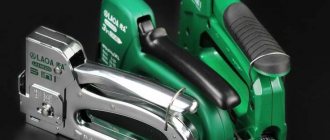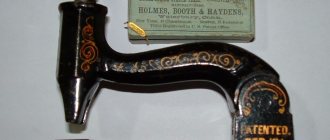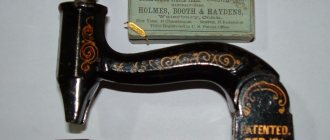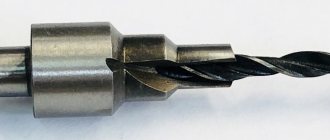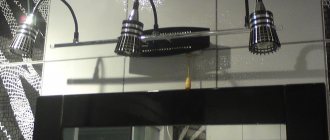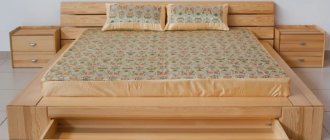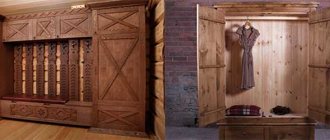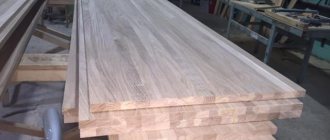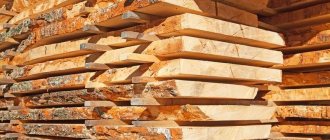Choosing a furniture stapler and staples. Don't confuse the type of bracket!
A furniture stapler is widely used in the household; with its help you can easily nail down greenhouse film, cover furniture with fabric, and it will also come in handy in other situations.
The variety of models will confuse the ignorant person, so in this article you will find useful tips on choosing how to use it, which brackets are suitable for which models. There are a wide variety of home staplers on sale; the first thing you need to pay attention to is the type of staple. The most popular and frequently used type of staple is type 53. Most models use type 53. This type has the following dimensions: staple width 11.4 mm, thickness - 0.7 mm. Of course, you don’t need to know these dimensions, you just need to know what staples your “pigalle” works on and their type.
Secondly, what depth of staples can be driven in.
Furniture guns can be simple (staples 4-8 mm deep, inexpensive). Most often made of plastic, intended for infrequent use. Only small staples are used, so they can only be used to nail fabric or paper. Cheap and simple, the price is about 100 rubles. Like these ones.
There are also options 4-10 (staples from 4 to 10 mm inclusive). Such pistols are already made of metal, although there is no adjustment screw. Yes, it is of no use, the staples can be driven in 10 mm without maximum adjustment. As a rule, type 53 staples are used.
Staplers 4-14 mm (the very first photo in the article). The most popular and best-selling. Made of metal, solid, high quality. Use staples 4-14 mm deep with 53 type. The main difference from others is the presence of an adjusting screw, with which you can increase or decrease the impact force. As a rule, if the staple is more than 10 mm deep, then the screw must be tightened in the direction of increasing the impact force, otherwise the staple will not completely enter the wood. A wide range of bracket sizes (4,6,8,10,12,14 mm) will allow you to choose the optimal depth for the job. Among the good models, we can highlight reliable and high-quality ones, the price is 330 rubles.
Also among the household models, it is necessary to highlight the model with bracket type 140. It is thicker, has dimensions: width 10.6 mm and thickness 1.2 mm. If you load type 53 staples into a type 140 stapler, it will shoot 2 staples at a time. Therefore, it is so necessary to know the type on which “pigalle” works. Most often, guns with 140 type support several types of staples, these are small nails and semicircular staples for driving in cables. We can say that this is a universal option, which is a pleasure to work with. However, it does not support the most popular type 53 bracket. The Stayer stapler, shown in the photo below, supports 4 types of staples: type 140, type 300, type 500 and type 36. Its price is 650 rubles.
Read more about braces below.
- the most used, used in most staplers.
Rectangular Bracket width 11.4 mm Thickness 0.7 mm. Dimensions (depth) 4-14 mm. Sold in packs of 1000 pieces. There are 2 types: hardened and simple. Tempered ones are used for strong or laminated wood (chipboard). Regular staples are 2 times cheaper and are designed for soft wood.
Powerful, thick staples are also used for fastening material to wood, plywood, and chipboard. Rectangular bracket. Width - 10.6 mm Thickness - 1.2 mm Dimensions 4-14 mm Packages of 1000 pieces. The cost is higher than that of type 53 staples.
Semicircular brackets for cable fastening. Bracket width - 7.6 mm (cable with a diameter of no more than 6.4 mm can be pinned) Thickness - 1.2 mm Dimensions - 10, 12. 14 mm
Small carnations with a T-shaped head. Used for fastening to wood, wood, chipboard. Nail thickness - 1.2 mm Dimensions - 10, 12 and 14 mm.
Carnations without a cap (finish type). In general it looks like type 300, only there is no cap. Dimensions - 10,12, 14 mm.
If you are engaged in furniture production and use the corresponding tool constantly in hard mode, then ordinary household models will not last long. Therefore, there are professional options for such purposes. The RAPID tool has proven itself to be excellent. This company specializes in the production of only furniture guns, so they are of excellent quality. However, their cost is rather high, for example. A standard gun for type 53 staples costs 2,200 rubles. However, according to reviews from customers who bought a couple of these models from us, they are very strong. Before that, they bought ordinary household ones, but they often broke down. Therefore, it was decided to buy 1 professional one for testing - it outlasted 10 conventional staplers. As you can see, the difference is simply huge. For home use, an ordinary inexpensive one, for example, will be enough.
How to insert staples
For those who are picking up a stapler for the first time, this can be a problem. But after the first time you will learn right away, nothing complicated. Here's a photo for you.
First, take out the “staple pusher” with the spring from the gun, then insert the staples with the point down and push them in with the “spring thing” until it clicks into place.
Stationery staples. Parsing.
We are surrounded by staples, they are used to fasten a cash receipt and a sales receipt written by hand, a stack of bills for an apartment, a candidate’s resume of a couple of sheets. Staples all around.
It really infuriates me when you try to punch three pieces of paper and the staples get stuck inside the stapler or bend on the paper.
Let's figure out why this happens.
- The stapler is faulty. For example, the output hole of the staple head is deformed, then the staples get stuck inside.
- The stapler contains the wrong size staples. The secret is in the same staple head - it is calibrated for a specific size. If there are smaller staples, they will fly through several pieces and get wrinkled inside. If more, they will get stuck at the exit. Although, there is always another option. If you are very strong, the staples will not get stuck, but the exit hole will break.
- You are trying to punch through more sheets than the stapler and staples are designed to handle.
- You bought cheap staples. A low price does not appear out of the blue. This means that the manufacturer saved at some stage of production.
In this article I won’t focus on staplers (we’ll get to them later), but on staples. Let's take a closer look at where and what we were missing, how to get honestly working staples and what to look for when purchasing.
In the photo: above, this is what the packaging and contents look like when the manufacturer saves on everything. In the lower part, brackets with different coatings: painted, uncoated, copper-plated and galvanized.
Making staples is a simple cutting and bending process. In a good way, they are made from uncut metal wire. This means that it is the same diameter along its entire length and all staples in the block will be even. However, the price will drop significantly if the wire is made of aluminum rather than iron. Aluminum is cheaper, but it is also softer, which means it bends and breaks more easily. Good staples are made of steel, and excellent ones are made of stainless steel. Good to know: all staples with a leg height greater than 10mm are made of steel.
To protect the staples from environmental influences and for beauty, they are coated with something. Here is a list of commonly used coatings:
- Painting is simply paint and serves purely decorative purposes.
- Galvanizing is the cheapest coating method and protects against rust. Over time, the staples become a greenish-red color.
- Copper plating is a protective and decorative coating, which is why the staples are pink or red in color. Protects against rust.
- Nickel plating is a cool plating method that makes the brackets look chrome-plated and will not rust for a long time.
It is logical that the type of coating does not affect the price. But we don’t save on nerves, right?
The staples should not fall apart when you take them out of the box. Moreover, the block must withstand a fall from a height of one and a half meters and not fall apart. To do this, the staples are glued. The amount of glue should be such that the staples do not spread throughout the box, otherwise there will be a mess inside. If the glue is applied unevenly, they will get stuck and bend inside the stapler. The same thing applies if there is a lot of glue, but I have never met such a generous manufacturer.
When purchasing, pay attention to whether there is an inscription on the box that the staples are sharpened or sharpened. The legs of the staples are sharpened from the outside or inside. This tiny adjustment makes it easier to pierce the paper and reduces the chance of the staples bending. Of course, unless you decide to get into the Guinness Book of Records and punch one hundred sheets with staples No. 10.
Selection of bracket size:
Usually, staples are purchased along with a new stapler. Or to one that has just been stolen from someone else’s table, repainted and with the numbers changed. Therefore, we look at what number of staples the stapler is designed for, and based on this, we buy staples. It happens that nothing is indicated on the stapler, that’s how the Chinese are. Then we turn on the logic mode, if the stapler is small, then 90% there are 10 staples, if the stapler is medium or large, then staples 24/6, or take it with you to the store. I did this when I needed to buy a faucet for a mixer. I turned off the water in the apartment, unscrewed the faucet and went to the market to pick it up. Profit!
One day, I will write about staplers in detail, but I will give some information right now. Before purchasing, decide what you need the stapler for. For use at home or everyday work in the office, with a small number of sheets, “number 10” is ideal. It punches up to 12-16 sheets (we are considering all the available options for purchase, sold on every corner), is small in size and does not take up space. Just what you need! For regular work with documents and a decent amount of paper, for example in the accounting department or secretariat, a more powerful companion is suitable - the number 24 stapler. Typically, such staplers punch up to 30 sheets, this is indicated on the packaging (we do not consider special perverted cases). Yes, 24/6 staplers are larger sizes. Yes, they take up more space. But they are also more reliable, designed for intensive work and active use in a 24 to 7 format. Such staplers use staples number 24/6 and 26/6, if indicated on the package.
Damn it, they kept it a secret behind seven seals. I scoured the Internet, looked through the available catalogs of manufacturers that I could reach, but there was very little information. But why?
Here are some versions:
- "Classical" sounds like this. The first number is the bracket type. To keep things simple, we called it a conventional unit. Supposedly, it includes the width of the staple, the cross-sectional size and the steel grade of the wire. This is the most popular version, found on almost all office resources.
Versions for the curious, clerks and deep immersion in the topic:
- OK. There is another version. I'll call it "mixed". Information of this kind is less common, but still. According to this version, the first digit of the fraction is tied to the American wire thickness marking system (American Wire Gauge (AWG)). In it, the lower the value, the thicker the wire. Smart guy mode activated: wire is made by drawing. It is pulled through the decreasing holes of the die to the desired diameter. The number indicates the number of pulls. AWG gauges indicate not only the dimensions (diameter, cross-section) of the wires, but also the sizes of rods, rods, tubes, and the same wire for staples.
- And here is the version from the manufacturer KW-Trio (Taiwan) (information from the official website). In staples with fractions, such as 24/6, the value in the numerator (24) determines the number of staples per inch. The lower the number of staples per inch, the thicker the wire from which the staple is made. Actually, that’s right, I went to the warehouse and looked. Here is a photo.
How to choose staples for a furniture stapler
Construction staplers are widely used today by specialists in various professions. It is used to connect various materials. The presence of many other names, for example, tacker, staple gun, staple gun, nailer, emphasizes the popularity and versatility of this tool. But to operate such equipment, you need consumables: staples, nails or pins. In practice, the first fastener option is most often used. Consumables differ in shape, material from which they are made, geometric parameters and other characteristics. The dimensions of the staples for staplers are the determining factor when choosing the appropriate fastener for the model being used.
Tool Features
You can do many things with a construction stapler, but each has its own specifics. For each specific job, you need to choose a tool that can make the task easier. The instrument should look decent and not ring in your hands. It is advisable that all its parts are made of metal - you can read this on the packaging before purchasing.
For a metal stapler, staples with a length of 4 to 14 mm are used. The cost of a quality instrument is high, but it’s not worth paying twice. A cheap model breaks down quickly, which can happen for several reasons:
- the internal mechanism wears out in it;
- springs break;
- a low-quality model can hit 2-3 fasteners at once.
- it will be light in weight, and driving the staple into dense material will not always be possible with one hand.
Existing types and sizes of staples
Staples for construction staplers are divided into separate groups according to different criteria, the main ones being shape and size. Based on the first sign, consumables come in the following varieties.
- U-shaped is the most common in practice, the most universal rectangular version of fasteners.
- U-shaped - an arched variety designed for securing wires and cables for various purposes, as well as different cross-sections.
- T-shaped (pins, nails) are the most rarely encountered consumables in practice, allowing you to make a connection that does not bear any load, in the most hidden way.
Few models of staple guns can work with all three varieties. For most tackers, only U-shaped fasteners will fit.
Classification of staplers
Before studying the issue of staples, it is necessary to understand the types of staplers.
By drive type:
According to their purpose, staplers are divided into:
- stationery (pocket, desktop and specialized);
- industrial (for construction, furniture, packaging; electrical installations).
The design of staplers is almost the same. The differences appear if the wrong type of staples are inserted into them: they stop working. This drawback is noticeable when thicker staples are inserted into a tool for thin staples and vice versa.
U-shaped fastener parameters
Consumables in the shape of the letter “P” are characterized by three sizes:
- the length of the leg or the height of the bracket (denoted by the Latin letter H), which determines the maximum possible depth of immersion of the fastener into the surface of the base material;
- the width of the “back” (the length of the bracket itself, indicated on the marking as L or b), which is taken into account if it is necessary to mask the connection point;
- thickness (width, designated W or a), which determines the strength of fasteners made from different materials.
All dimensions on the markings are presented in millimeters. The photograph shows U-shaped and T-type fasteners with the letter designation of their individual parts.
It should be taken into account that the shorter the length of the bracket, the less load the fastening can withstand.
Of the entire significant range of U-shaped brackets, the following types are most in demand in practice:
- 53, having a staple thickness of 0.7 mm, a length of 11.3 mm and a stem height of 4 to 14 mm;
- 140, characterized by a significant degree of rigidity, with dimensions: H - 6÷14 mm, L - 10.6 mm, W - 1.25 mm.
Other existing types of U-shaped consumables by standard size are rarely used.
Types of U-shaped and T-shaped consumables
Arc-shaped fasteners are intended for special modifications of furniture staplers. There are only two types of such fasteners:
- 28 (otherwise denoted by the capital letter S), designed for securing a cable with a cross-section of 4.5 mm, having a clip thickness of 1.25 mm, and a leg height of 9÷11 mm;
- Z6 (L is also written in the marking) is a semicircular fastener with a thickness of 1.25 mm, a leg height of 6÷10 mm, used when fastening a wire with a diameter of 6 mm.
Alternative solutions
The Novus J-19 EADHG model will be more convenient, which has a rubberized handle and weighs 1024 g. This professional tool has a multiple impact mode, a safe reloading system and a remote stop. There is a special latch to fix the handle in the lower position, and a plastic hook allows you to hang the tool on your belt if necessary. The Rapid R353 model has an impact-resistant rubber insert on the body; it weighs 886 g, and also has a shock-free release mode, which simplifies operation and makes it more comfortable.
Bracket material
Staples for an electric stapler (as well as for mechanical and pneumatic ones) are made from different materials. According to this criterion, the following types of fasteners are distinguished:
This determines not only the properties of fasteners, but also indicates the scope of their application.
Steel consumables for construction staplers
Due to their significant strength, steel staples are used in practice most often in various fields of activity. They may be hot or not. The first ones are used if you have to work with hard material. They are good to drive in, but they break more easily, unable to withstand lateral loads.
The main disadvantage of both types of steel fasteners is their susceptibility to corrosion: they rust over time. Corrosion processes occur especially quickly in humid conditions. This not only spoils the appearance of the connection, but also reduces its strength.
Staples for construction stapler Steel 62125, T50, 14x10.6 mm
To extend the life of steel brackets, they are coated with zinc. Galvanized products are quite resistant to destruction, so they last many times longer.
Also, to prevent corrosion, fasteners are made from stainless steel. Such products are more expensive than products made from ordinary metal. Stainless steel staples are very reliable because they are resistant to destruction. Galvanized and stainless steel consumables are produced mainly by well-known manufacturers who are concerned about their reputation.
Aluminum and copper fasteners
Aluminum staples are a cheap option. The products are resistant to corrosion, but have low strength: they can easily bend when driven in or burst from a relatively small load. For these reasons, the scope of application of aluminum consumables is limited to working with soft materials: assembling cardboard containers, securing electrical wiring, as well as light cladding.
Copper staples for furniture staplers are stronger than their aluminum counterparts. They are also resistant to corrosion and are suitable when working with soft materials. In addition, the high cost limits the distribution of copper fasteners: they are used mainly for decorative finishing.
Which staples are best?
It is better to use galvanized or stainless steel staples. This material is very reliable, most importantly durable and not susceptible to corrosion. Most manufacturers use this material for their staples. However, it is worth remembering that in fastening areas where the load is minimal, it is necessary to use lightweight aluminum staples.
It is important to know that staples can be either sharpened or unsharpened. It will be much easier to work with sharpened staples: they will not have a high load and sharpened ones will be easier to use for a large amount of work.
The thicker the material needs to be joined, the more massive and higher the staple required, which will be used when working with a stapler. But in this case, the stapler needs a lot of power.
To keep the fasteners invisible, narrow staples are needed. However, it is worth knowing that in this case, not all tools will work with these staples.
When work will be carried out with strong material, it is better to choose fasteners of small thickness - such a bracket will be sufficient in this situation.
Correct selection of staples according to tool model and type of work
To choose the right consumables for the job, you need to focus on a number of criteria:
- the type of fastener for which the staple gun in use is designed, as well as its shape;
- the material of the base surface into which the fasteners are to be driven;
- future conditions in which the fasteners will be located after connecting the parts;
- the material from which consumables are made;
- sharpness of the ends of the staples;
- quality of consumables.
For instructions on the appropriate size and type of charging fasteners for the model of staple gun you are using, please refer to the packaging or the tool's instruction manual. These are mainly U-shaped consumables. The fastener number on the marking is represented by 2 numbers: the first indicates the width of the bracket, and the second indicates the height of its leg.
The choice of consumables from the size range designated by the staple gun manufacturer is based on the magnitude of the future load on the fastener: the higher its value, the larger the dimensions of the fastening element should be . If the base material is hard, then steel or hardened staples are suitable. It is better that they have pointed ends - this will ensure easy driving in.
When it is necessary to make a connection point that is not subject to loads as inconspicuous as possible, consumables of the smallest possible size should be used.
For use in wet conditions, copper, aluminum, galvanized, or stainless steel staples are suitable. The optimal option depends on the hardness of the base and the degree of the upcoming load.
Working with a mechanical stapler
To learn how to carry out repair work using a construction stapler, you need to know about the basic rules of this process.
Charging the device
Before you start, for example, upholstering a sofa, it’s worth learning how to charge a stapler. This is done step by step according to the following algorithm:
- Installing the device on the fuse.
- A folding flap at the rear of the stapler reveals a compartment for staples.
- Pulling the rod with the spring out of the compartment.
- Installing staples with the upper bent part towards the handle of the stapler.
- Releasing the rod to clamp them.
- Slam the sash until it clicks and start working.
Some models have a different mechanism and therefore many people think about how to refill them. There is nothing complicated here either, just remove the special chute that appears when you press the button. The staples are installed into it with their sharp ends down. Afterwards the filled element is inserted back.
The process of charging a mechanical stapler with staples
We attach the staples to the base
After clarifying the charging instructions, it will not be amiss to find out how to use the stapler during direct work.
This is done like this:
- Prepare materials for fixation and the instrument itself.
- Mark the line along which the staples will be attached. This makes it easier to install fasteners exactly in the place where you plan.
- The stapler is applied to the desired place quite firmly.
- Without lifting the device from the surface, press the lever.
- After this, if everything is done correctly, a characteristic sound will be heard, and the bracket will be securely attached to the base.
Staple fixation process
Cost and packaging of staples
Fasteners for staple guns are sold in boxes. Moreover, one package can contain from 500 pieces to 5000 staples, fastened with adhesive film into separate blocks. They fit completely into the tool magazine or need to be divided into parts of the required size.
It is more convenient for work to select consumables that immediately fit the length of the block.
Prices for consumables, depending on the manufacturer, range from tens to hundreds of rubles per 1000 pieces. The difference is related to the metal from which enterprises make products. It is recommended to purchase more expensive, but high-quality fasteners. Cheap consumables often bend or break when driven in. This significantly affects the duration and quality of work.
Staples Stanley type-A (5/53/530) 8 mm
There are no trifles in the work of a professional. The correct choice of fasteners in size and material will not only increase labor productivity, but also improve the quality of the result. In addition to the types of brackets for tackers considered, some manufacturers produce consumables of non-standard sizes and shapes. Such fasteners are only suitable for special modifications of construction tackers. Often such a tool is designed to perform only certain, specific types of work.
Forum members tell how to reupholster upholstered furniture with your own hands
Over time, favorite things become old and go out of fashion. And the once beautiful sofa, arousing the envy of all the neighbors, difficult to obtain through connections or bought at a sale, turns into a shabby, dull piece of furniture. Which, however, can be a pity to part with. You can return upholstered furniture to a fresh and neat look by reupholstering it. FORUMHOUSE users talk about how to update their favorite sofa and armchairs.
If the upholstered furniture has a simple shape and design that can be disassembled and assembled without special tools and equipment, and all the mechanisms are still strong enough and do not require replacement, you can do the reupholstery yourself. True, it is better to start with fabric upholstery - leather and its synthetic substitutes are considered complex materials, and such reupholstery requires experience and skill.
Materials for production
Staples for furniture staplers are made from various types of metals. This allows you to select a material with the most suitable properties. There are several main types of metal:
- aluminum is the cheapest material with low rigidity. On a solid frame and when there is a heavy load on the joint, fasteners made of this metal are not used, as they bend and break. But aluminum is resistant to corrosion, which is one of its advantages;
- copper is a soft but corrosion-resistant expensive metal;
- steel - two types of fasteners are produced: hardened and without hardening. The first is higher in strength, but more expensive. Both types are susceptible to corrosion;
- plain stainless steel or zinc-coated - such elements are highly durable and are considered the most popular type of staples.
The choice of metal for staples is carried out taking into account the place of their use and purpose. It is also worth paying attention to the budget allocated for repairs and the cost of materials.
Recommendations on when to purchase a pneumatic stapler
If you need a furniture stapler, how to choose, the price will decide. On average it is 500 rubles. But it is also important to take into account the purpose, as well as operating conditions. For example, a pneumatic stapler is more suitable for stationary use than others. It is quite convenient and operates using air that is under pressure.
Such a tacker performs its task with lightning speed. The pneumatic model weighs much less compared to the electric one. But in this case, there is a catch, expressed in the fact that along with the stapler you will also have to purchase a compressor, paying additional money for it. This option is best purchased for stationary work. Pneumatic models are purchased for production conditions.
Types and sizes
Each furniture stapler has its own type of staples. There are a large number of them and they all vary in size. The most commonly required staples are suitable for furniture staplers of type 53 and 140. They have the following parameters:
- 53 — back width 11.3 mm, thickness 0.7 mm, leg height (depth of entry into the material) from 4 to 14 mm;
- 140 - width 10.6 mm, thickness 1.25 mm (almost 2 times the previous one), height 6-14 mm.
Staples for furniture staplers can have the same dimensions but have different names. This is due to the characteristics of their manufacturer. Each type of fastener has its own parameters. They mean the following:
- width characterizes the strength of the material (for use on thin fabric, take wide ones, but when working with plywood, this size does not matter);
- thickness (length of the staple) is needed to assess the possibility of hiding the fastening, but not every stapler can work with a short staple, and this also reduces the fastening force);
- height (length of the leg) characterizes the thickness of the canvas on which the fastening is made, taking into account the depth of entry into it.
Advantages and disadvantages
Any equipment has its advantages and disadvantages.
It is important to note each of them so that you can make the right choice.
The advantages of a mechanical stapler include:
- Price;
- it has a simple design (this parameter is important, since the simpler the tool is, the less often it will break);
- Mobility;
- Possibility of safe use.
The disadvantages of this type of equipment include the following factors.
- Working with it requires a lot of physical effort.
- It has low speed.
Mechanical stapler.
The advantages of electric include the following advantages.
- When working with it, you do not need to make any physical effort;
- Has a high operating speed;
- The tool has high power.
Among the disadvantages of this type of equipment are:
- The cost is higher than mechanical;
- An electrical connection is required (because of this, they can only work within a limited radius, it all depends on the length of the wire);
- Heavier than the previous type.
Electric stapler.
The positive features of a pneumatic stapler include:
- Work speed at a high level;
- Has great power.
Among the disadvantages of this type of equipment, the following are noted.
- A compressor is required. This affects cost, weight and dimensions.
- In most cases it is used as a permanent installation.
Pneumatic stapler.
Nuances of choice
A staple for a furniture stapler may have sharpened legs. They fit into the base more easily, and the power on the device is set lower than usual. This saves energy consumption and increases the service life of the automatic stapler. If a hand-held device is used, less effort is required to secure it. This allows you to work longer and get less tired.
Before going to a hardware store, you need to think about what staples are best for use in a furniture stapler given the situation that arises during the renovation. If high humidity is often maintained in the room (bath, sauna, bathroom, balcony), then the choice should fall on corrosion-resistant metals. These include copper, aluminum and stainless steel. This will avoid rusty stains on the materials and also prevent the destruction of the structure.
If it is known that the load on the fasteners is designed to be small, it is advisable to install them from aluminum. This choice is especially good for vapor barriers and wiring. In this case, you need to take into account the level of hardness of the base material, because aluminum is quite soft and may not fit into it.
For fastening lining or other hard and massive materials, it is better to choose stainless steel clips. They will be able to support the weight of the structure and are not subject to destruction from water. If in such a situation you install aluminum fasteners, the wood will absorb water and bend the holding elements. The structure will become fragile and may collapse.
The staples are packaged in boxes of various sizes. They come in 500, 1t, 2t, 3t, 5t pieces per package. The staples are fastened together with an adhesive compound into blocks of several pieces. This is necessary for ease of filling the stapler. The length of the block does not always correspond to that of the device, but the paper clips are easily separated from each other, allowing you to adjust the size.
When choosing staples, you need to take into account not only the approximate quantity required for repairs, but also the percentage of possible defects. If the master working with the stapler is inexperienced, and the staples are fragile or soft, you should take at least 50% of the expected number in reserve.
The price of paper clips ranges from 30 rubles. up to 212 rub. of the same type (53), but from different companies. Inexpensive fasteners are produced by Saturn, and the most expensive ones are produced by Bosh. The cost depends on the material used. The higher it is, the stronger the metal. This means a lower percentage of defects and ease of use. Therefore, sometimes it is better to choose more expensive, but high-quality fasteners, and spend less time and effort on the work.
Stainless steel staples are expensive, but at the same time they successfully combine corrosion resistance and strength. This material is especially relevant in rooms where reliable fastening is required, but high humidity is maintained (bathrooms, baths, saunas). These paper clips are produced only by large companies that are ready to be responsible for the quality of their products and their considerable price.
Fasteners made of copper are stronger than those made of aluminum; they are also non-fragile and resistant to water. They are often used in decorative structures due to their color and properties. But copper staples are expensive, so their use is not as widespread as aluminum ones.
When choosing steel fasteners, production technology is taken into account. Hardened products are more durable, but their cost is higher. They are chosen for hard surfaces that softer metals can bend on. They easily fit into the main fabric, but under lateral load the fasteners cannot withstand and break in half.
When choosing paper clips, not only the type of room in which the work will take place is taken into account, but also the materials used. If it is necessary to secure the back surface of a cabinet made of hardboard or plywood, use simple steel fasteners. It is better to choose galvanized ones to avoid corrosion, but regular ones will do. In chipboard, staples are easily fixed, but do not hold well. Therefore, it is better not to move furniture assembled in this way or subject it to heavy loads. Since the thickness of the chipboard is considerable, high staples are needed, with a long leg.
To work with upholstered furniture or upholstery of chairs, you need to choose paper clips with a large width and sharp legs. Stainless steel and copper are good materials. The large-width staples fit neatly into the fabric without disturbing its integrity, and the pointed legs can be easily inserted into any material, including wood.
What staples should I use to reupholster furniture?
The range of uses of staplers in the 21st century is large. This tool has become an indispensable assistant in construction, home furniture repair and in the production of furniture factories. Modern progress does not stand still, and what was previously routine work and took a lot of time is now automated and does not take much effort and time from men.
Now there are many varieties of construction staplers and staplers for furniture, and there are several times more types of fastenings. They all differ in height, strength, quality, and materials of manufacture. There are a huge number of types of staples, so much so that sometimes when you come to a hardware store to buy staples for a stapler, your eyes run wide from the variety of choices.
Information about what type of staples are needed for a particular stapler can be found in the instructions for the tool, and this information can also be found on the box.
Brief contents of the article:
Instructions for use
To understand why a furniture stapler bends staples, you need to check whether they are inserted correctly, and also compare the material of the base and the staple. The required fastener characteristics are indicated on the tool label. You need to study it carefully and choose exactly the brackets that are indicated.
If you have taken the necessary staples, but the furniture stapler does not hammer in the staples, there may be several reasons:
- tool malfunction;
- discrepancy between the selected metal and the hardness of the base;
- blunt ends of the staple if there is an obstacle to its entry into the material;
- incorrectly threaded stapler;
- unadjusted instrument.
Before work, you need to make sure that this type of paper clip is suitable in shape and size for the stapler. If these parameters do not match, the tool will not work. The exact description of the required consumables is indicated on the box for the stapler or on a sticker located on the body of the tool.
How to insert staples into each specific stapler is indicated in its instructions. Usually they are located with sharp edges down on a special holder with a spring. It is filled all the way so that the stapler lasts a long time. The exact number of paper clips is indicated in the instructions. It is in the box with the stapler.
If the tool is mechanical, then it needs to adjust the screw regulator (if equipped). The greater the depth of the staple, the tighter the handle should be tightened. Sizes from 10 mm are taken into account.
The adjustment is checked on an inconspicuous place or unnecessary material, identical in properties to the base. The adjustment is carried out gradually, from the minimum position to the maximum. Adjustment is carried out until the bracket enters the base with one blow. Once the tool is set up, it can be used directly on the part.
In order not to make a mistake in the distance from one bracket to another, mark it with a pencil. Some staplers have a lock that allows you to set the desired length between the staples without basting. It is better to insert the staples not parallel to the edge of the sheet, but with an inclination of 45°
To ensure that the edges of the product look neat and do not have to redo the work, the material is held while driving the staples. It is necessary to check after each row that the required number of paper clips is present. When upholstering upholstered furniture, the distance between the fasteners should not be too small to prevent damage to the fabric. It is best to insert paper clips into the fold of the material, which will extend the life of the product.
Criteria for choosing a construction stapler
When choosing a stapler for work, you should pay attention to whether it is safe. Well-known companies that produce such devices carefully think through this issue. The main protective function is the inability of the stapler to operate at idle speed. This means that the tool will only release fasteners when it is against the part. Before purchasing a tacker, you need to make sure that it has such protection.
The presence of a viewing window is not only pleasant, but also a convenient feature. Even a cheap Chinese model may have it. In the window you can see how many staples are currently in the device.
The device should have a comfortable handle; manufacturers of well-known brands have taken care of this. The instrument is simply pleasant to hold in your hand.
A model in which the impact force can be adjusted is considered practical. Many devices have this capability, including mechanical ones .
Before purchasing replacement brackets, you need to know what type your appliance works with. This information can be found on the device packaging, in the instructions, or on the case itself. As a last resort, you can write down the model name. An experienced seller will be able to determine the type of bracket you need by name.
Review and modification of the furniture stapler
Good afternoon, dear readers! I decided to share with you information about a good furniture stapler and its slight modification.
The stapler was purchased on Aliexpress, link – https://ali.pub/37ymb1
How to buy profitably on Aliexpress, see here
March coupons for the site's birthday
$5 discount when purchasing over $25 (coupon 5/25), link ( https://ali.pub/378ovx )
$6 discount when purchasing over $30 (coupon 6/30), link ( https://ali.pub/378p0e )
$8 discount when purchasing over $50 (coupon 8/50), link ( https://ali.pub/378p3w )
You can take no more than two coupons of each denomination. You must first log in to the site! Coupons expire on April 1st. Coupons 6/30 and 8/50 appeared relatively recently, so they are taken without problems.
If you manage to get a coupon of a large denomination, but you need to buy a cheaper product, we use the so-called “add-on”. To do this, we bring the cart up to the coupon value, apply the coupon and click “Checkout”. We do not pay for orders. Go to my orders, select the one you need and pay for it. The discount on the coupon will be distributed in proportion to the amount of orders.
I didn’t plan to write a review, since I’m more of a reader than a writer, so I apologize in advance if I missed any points.
A stapler is a tool designed for fastening a particular material by driving staples:
Despite the rather simple device, the tool is very useful for various construction or household work. It is mainly used at dachas for attaching film to greenhouses, attaching hydro or vapor barriers, insulation tapes, upholstery and other work.
The stapler arrived in a regular postal package. There was no useful information on the packaging, so I threw it away as unnecessary. Judging by its appearance, the stapler is perfectly new, without scratches or other defects. I've already worked on it a little, but it's still like new:
Like most such devices, the stapler is equipped with a safety (transport) bracket:
In the working position, the lever protrudes quite strongly, so it will be more convenient for people with long fingers to work with it:
The stapler uses regular staples in several sizes (4-8mm and 4-14mm):
I use fairly cheap 10mm staples:
They have an optimal height and thickness of 1.25mm
Design:
Its design is similar to those sold in our stores, with the exception of some important aspects:
- the case is completely made of metal - allows for rough handling and accidental falls, and also allows you to count on some strength and durability
- extended spring compartment with a stiffer spring - you can count on good impact force
— adjusting screw — allows you to change the impact force when working with soft or brittle materials
What I saw in our stores for 300-400 rubles - either with a plastic body, or low-profile with low impact force. Analogues start from 500 rubles.
The design is incredibly simple:
Using the lever, the working spring is cocked and in the uppermost position the firing pin is released, which, under the action of this same spring, hits the bracket, pushing it out of the magazine. The force of the impact directly depends on the stiffness of the spring.
Spring-loaded staple supply unit:
The magazine itself is removable, so if the staples get stuck, you can easily pull it out and fix the problem:
It rests on these two supports:
Before removal, you must first remove the staple supply unit, otherwise they will quickly fly out:
The firing pin is, of course, metal:
The adjusting screw has some peculiarity and does not tighten completely (maximum impact force), but rests against the protrusion of the housing:
If you unscrew it, you can feel the spring of the impact mechanism:
It is generously lubricated with thick lubricant, which in itself is a big plus.
Dimensions:
The sizes are small, it fits comfortably in the hand:
Now for the improvements:
Despite the high-quality execution, there was not always enough energy, so the idea arose to slightly modify the design. To evaluate the modification, I used regular seven-layer plywood and a piece of compressed wood board:
Let me warn you right away that the slab is very dense and not all nails can be driven into it. When setting the maximum force, the stapler was unable to completely drive the staples into either the slab or the plywood:
Therefore, first of all, unscrew the adjusting screw and tighten the stop:
This will give us another four millimeters:
The effect becomes noticeable immediately and you can stop there. But I recommend modifying the screw a little more, thereby compressing the spring of the impact mechanism even more, since it has a good length:
To do this, you need to put several washers on the screw:
It’s good if you have the ones you need in your bins, since not all washers will fit. You need to select a washer so that it sits on the protruding “neck” of the screw, i.e. had the appropriate diameter and fit through the mounting hole in the body. I found only one suitable washer out of a whole bunch, which also had to be drilled out a little:
Of course, if you don't have the right ones, you can buy a couple of them at a hardware store, or use Grover washers, they fit perfectly:
But with them it is difficult to adjust the force, since they rest against the end of the spring and make it difficult to turn the adjusting screw. On the other hand, adjustment is not required so often, so this can be neglected.
After all these movements with the adjusting screw tightened, the staples completely pierced the plywood, but they still couldn’t cope with the slab and simply moved the staple:
The photographs show that the impact force has increased several times. The stapler copes with ordinary wood with a bang, but it is now used very rarely. There are no problems with fiberboard and HDW, and these are the most popular materials in furniture production. After modification, I had already successfully “fired” the old chair and did not have to finish off the staples with a hammer anywhere. Without modification, they only went to the middle, which prompted me to do this “doping.”
The only disadvantage of this modification is increased wear (depletion) of the striker stop:
It can also be easily fixed with a simple file, but you will need to completely disassemble the stapler.
In general, I recommend any metal stapler for modification, especially low-profile ones with low impact force.
The stapler was purchased on Aliexpress, link - https://ali.pub/37ymb1
How to buy profitably on Aliexpress, see here
March coupons for the site's birthday
$5 discount when purchasing over $25 (coupon 5/25), link ( https://ali.pub/378ovx )
$6 discount when purchasing over $30 (coupon 6/30), link ( https://ali.pub/378p0e )
$8 discount when purchasing over $50 (coupon 8/50), link ( https://ali.pub/378p3w )
You can take no more than two coupons of each denomination. You must first log in to the site! Coupons expire on April 1st. Coupons 6/30 and 8/50 appeared relatively recently, so they are taken without problems.
If you manage to get a coupon of a large denomination, but you need to buy a cheaper product, we use the so-called “add-on”. To do this, we bring the cart up to the coupon value, apply the coupon and click “Checkout”. We do not pay for orders. Go to my orders, select the one you need and pay for it. The discount on the coupon will be distributed in proportion to the amount of orders.
How they are sold and prices
Staples for construction staplers are sold in small boxes that can contain 500, 1000, 2000, 3000, 5000 pieces. They are fastened with adhesive film into small blocks. Depending on the magazine capacity, a whole block and/or part of it is inserted - break off a piece of the required length.
Prices vary greatly. From 30 rubles for 1000 pieces of 53 types of the Saturn campaign, up to 212 rubles for the same volume from Bosh. But, as mentioned above, the difference is in the metal from which the staples are made. It feels very good while working.
Staples for a construction stapler - main characteristics and designations from different manufacturers
Source: baniwood.ru
